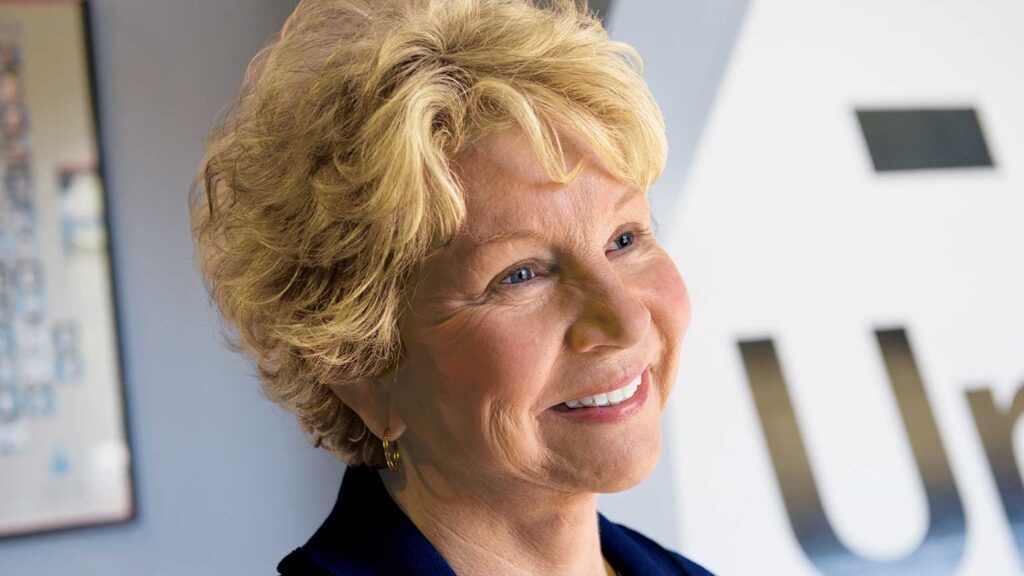We all remember iOn, the day the NASA space shuttle Challenger, carrying a seven-member crew, exploded 73 seconds after liftoff. An unspeakable tragedy for the nation, for the world. And for me. My husband, Dick Scobee, was the commander at the controls, and for a long time I wasn’t sure if I would ever be able to get that day out of my mind.
Nine o’clock, on the morning of the launch. I stood on the rooftop viewing area of the Kennedy Space Center in Merritt Island, Florida, with our son, Rich, daughter, Kathie, and her son, our first grandchild, Justin. I looked out at the cloudless sky and shivered; it was exceptionally cold for Florida. In the distance I saw the shuttle. Icicles hung from the launchpad. This would be Dick’s second spaceflight. He was an experienced Air Force test pilot, had served in Vietnam and knew how to fly more than 45 types of aircraft, but I was worried. I was fixated on those icicles.
I thought back to our last conversation, earlier that morning. The four of us were staying at an apartment Dick had rented for us. He was staying in crew quarters. It was still dark when he called. “It’s freezing out there,” I said. “Is the launch still on?”
“They’ve given us the go-ahead,” he said. “The engineers knocked off icicles they thought might be a problem. They showed us pictures of the rockets blasting off in snow. It’s safe, they said.”
“Okay,” I sighed, not completely convinced. “I love you so much.”
“See you in a week,” Dick said.
Now here we were, awaiting the big launch. Finally, the countdown began. T-minus ten, nine, eight…liftoff! The floor shook with the raw power of millions of pounds of thrust. We cheered as the shuttle climbed sunward atop a great plume of smoke. Rich put his arms around his sister and me. I turned and smiled at Justin in Kathie’s arms. I imagined Dick in his calm, take-charge mode.
All these years later I can still vividly see what came next: The Challenger exploded. Flaming debris burst into the perfect sky as the orbiter shattered into a million pieces. Oh, God! No! Not my husband! Why, God, why?
My legs wobbled. Rich grabbed my arm to hold me up. In stunned silence, I looked at him, at Kathie. No words came. In one terrible instant our lives had been completely and irrevocably changed. I kept trying to turn the clock back to that last conversation about icicles, as if I could change things. Yet reality kept imposing itself. I was a widow.
A bus took us to crew quarters. There, officials said what we already knew. “The crew’s dead. They could not have survived an accident like this.”
That night, NASA arranged for us to return to our homes. I dreaded going back to Houston. What was home without Dick? Without my husband, my partner, my best friend and companion for 26 blessed, wonderful years?
Somehow I put one foot in front of the other. I made decisions mechanically—memorial services, arrangements for visitors. Inside I was dying, stunned, uncomprehending. I managed to struggle through the weeks following Dick’s funeral. Even as the tragedy faded from public view I felt as if I would never really live beyond that moment when Challenger disappeared from the sky.
One afternoon in April, I opened my front door to flashes of lights and questions from reporters about the investigation into the disaster. I froze. “If words could bring back my husband, I would speak volumes,” I said, then closed the door and fell to the floor, sobbing. My neighbors Barbara and Fred helped me pack a bag and took me to their home.
Safe in their guest room, I crawled under the bedcovers. My mind was in overdrive, the same thought echoing over and over again: Why? There was no reason, no acceptable explanation for why my husband was no longer here. I tossed and turned, rubbing my throbbing eyes. How could I go on without Dick? How would I ever feel loved again? Please, God, let me go to heaven with my husband, I begged. But if you won’t take me, then give me strength to live.
I thought back to a time when I felt equally helpless. My dad was an itinerant carpenter. My mother was mentally ill and frequently hospitalized, and though I was a child myself, I was often left in charge of my two younger brothers. I was always anxious. We moved around a lot (15 times in 10 years) and my grades suffered. I dreamed of escaping our day-to-day struggles, but I saw no way out. One day, when I was nine, a neighbor stopped by with a basket of tangerines and The Power of Positive Thinking, which my mother left on our dinette table. I picked it up and started reading. I was mesmerized! Dr. Peale wrote that God was in control of our lives, that he could help us in our times of need. Faith wasn’t discussed in our home, but something in me just knew Dr. Peale’s words were the truth. From that day on, I prayed. Every night I asked God for strength, for help in rising above my circumstances.
Lying there in bed that April night I thought about how my life changed dramatically after reading that book. I graduated from high school at 16, married Dick, earned a Ph.D. in curriculum and instruction from Texas A&M University, landed a great teaching job, had two amazing kids and an angel of a grandson. I had been so blessed! God, you’ve brought me so far. Can’t you help me through this too? I pleaded. Finally I drifted off.
The next morning, instead of awakening to fear and worry, a deep, indescribable calm fell over me. I heard a voice, not in my ears but in my heart. It is not your turn. You still have life to live.
I stepped outside and a ray of sunlight fell across my back. The tense, tight feeling was gone, completely gone. Sounds consoled me—birds singing and children at play, a concord of voices laughing in the distance. A single daffodil bent forward as if to welcome me to spring, to new life. A car drove up—Kathie and Justin. He fell into my arms. “Sweetie!” I shouted, giving him a squeeze. What beauty this life has! How could I ever want to leave it? Leave them? For the first time in a long time, I felt alive and utterly loved.
By summer, the cause of the explosion was found: Faulty O-rings had allowed hot gases to leak into the external fuel tank. The Challenger families did not want the disaster to be the end of the crew’s mission. In August 1988 we unveiled the Challenger Learning Center in Houston—a place where students can climb aboard a child-sized space station and fly a simulated mission. A place I imagined the young Dick Scobees of the world would foster their dreams.
It’s still hard to believe what happened that cold, somber January day 25 years ago. But I know that there is life after tragedy, and a deeper strength to pull us through.
This story originally appeared in the January 2011 issue of Guideposts.
For more inspiring stories, subscribe to Guideposts magazine.





